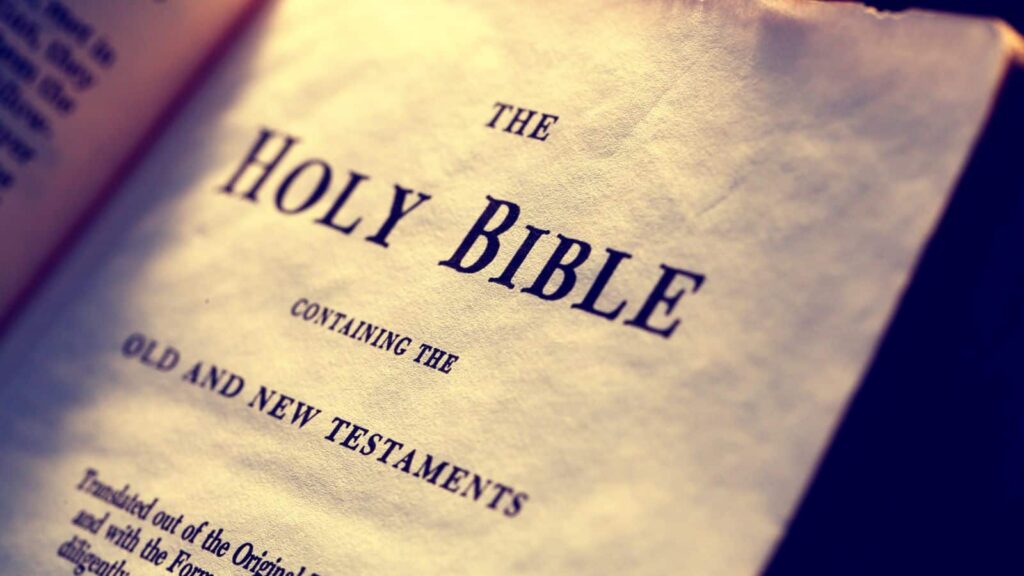The Bible, revered by millions of Jews and Christians, has been extensively read, studied, and analyzed for centuries. Its stories are deeply embedded in modern Western culture, yet many often misunderstand their details and core messages. Here are 17 Bible stories that are frequently misinterpreted.
The Garden of Eden

The Garden of Eden in the Old Testament describes a biblical paradise inhabited by Adam and Eve, the first created humans. Adam and Eve are expelled for eating the “forbidden fruit” after picking it from the Tree of Knowledge of Good and Evil. Listverse notes that people often assume the fruit was an apple, but it is unspecified in the Bible.
Sodom and Gomorrah

Sodom and Gomorrah parallels Noah’s Ark in their tellings of God destroying sinful areas. The sinful cities of Sodom and Gomorrah have traditionally been associated with homosexuality. But as Britannica notes, “Modern scholarship, particularly in Judaism and certain branches of Christianity, has proposed that it is the inhabitants’ lack of hospitality, not their homosexuality, that gives offense to God.”
Tower of Babel

The Tower of Babel is a parable in the Old Testament that explains why different languages are spoken worldwide. The people constructing the tower spoke one language and decided to build a tower so high that it would touch the heavens. But God intervened, making them speak different languages. Bible readers often misinterpret the story by seeing God’s intervention as punitive rather than a means to diversify human culture and language.
Jonah and the Whale

When Jonah is alone at sea after falling into the Mediterranean Sea when disobeying God’s orders and fleeing to Nineveh, he is swallowed by a “great fish.” People often misinterpret this fish as a whale, but the original text doesn’t specify the kind of fish.
The Nativity

The Biblical documentation of Jesus’s birth is presented in many different mediums during the Christmas season, often with misconceptions about the original telling. People usually assume that three wise men visited Jesus after his birth, but as The Gospel Coalition points out, “this number is found nowhere in Biblical accounts.”
Jesus Walks on Water

Jesus walking on water is a miracle described in the New Testament. People often incorrectly assume that Jesus walked on water as a display of power instead of as a lesson in faith; Jesus walked on water to prove he was in command of the elements as the Son of God.
The Loaves and Fishes

The feeding of the 5,000 is often exaggerated, with people missing the significance of the exact number provided in the Bible. Bible Gateway shows the Bible reads, “The number of those who ate was about five thousand men, besides women and children.” The food’s source is also sometimes mistaken as magically appearing, but a boy is described as supplying it.
The Prodigal Son

People often focus on the prodigal son’s wastefulness and overlook the story’s core message of forgiveness and redemption. Additionally, the elder brother’s role is sometimes neglected, despite its crucial morals about the dangers of jealousy and self-righteousness.
The Good Samaritan

This parable tells the story of a traveler, implied to be Jewish, who is beaten and left for dead on the side of the road. A Samaritan helps him, the significance of which is often overlooked, as the two groups held each other in disdain at the time.
David and Goliath

“David and Goliath” is widely used to describe a smaller opponent taking on a larger, stronger opponent. People often wonder how David could defeat the much larger Goliath with a slingshot. But as Levi Johnson writes in a post on Medium, David agreed to fight Goliath because he was a sharpshooter with a slingshot and had “accumulated thousands of hours of practice using his weapon to sling stones at predators such as lions and coyotes.”
The Ten Commandments

The Ten Commandments are principles laid out in three different versions of the Bible. People often misinterpret the Commandments as outdated laws rather than the fundamental ethical principles of Judaism and Christianity.
Noah’s Ark

Noah’s Ark describes God’s decision to return the earth to its pre-creation state of flooded water and remake it with the life on Noah’s Ark. People often wonder how Noah could have fit millions of pairs of different animal species on his ark, overlooking the “seven pairs of clean animals” detail. Answers in Genesis cites studies that show it was “approximately 1,000 kinds of animals, meaning Noah brought fewer than 5,000 individual animals.”
The Beatitudes

The Beatitudes are the sayings of Jesus, recounted in the Gospels of Matthew and Luke. Their role in Christian ethics is sometimes overlooked in favor of the Ten Commandments, and they are often misinterpreted as general promises of happiness rather than spiritual virtues for discipleship.
Pentecost

The date of Pentecost depends on the different dates of Easter every year, making it a movable feast. The Boston Public Library describes it as commemorating the “descent of the Holy Spirit on the Apostles and other followers of Jesus Christ while they were in Jerusalem celebrating the Feast of Weeks.” People often reduce it to a one-time Biblical event rather than the beginning of the church’s mission.
The Last Supper

The Last Supper is depicted in many paintings as being eaten on a table with Jesus at the center. But as Grunge points out, meals in Palestine and the wider Roman empire at the time were eaten “seated on cushions on the floor.”
The Conversion of Paul

The nature of Paul’s conversion is often overly dramatized, missing the transformative journey that followed. Paul’s subsequent struggles and time in Arabia are also widely simplified, as is his pivotal role in spreading Christianity.
The Book of Revelation

The final book of the New Testament’s core message is often overshadowed by sensationalist themes that miss its core message of hope and perseverance. The symbolism of the book is taken literally when interpreted by various Christian groups, rather than as symbolic apocalyptic literature.







